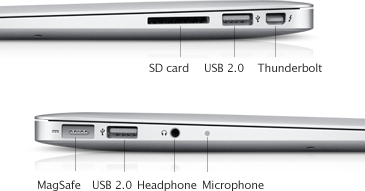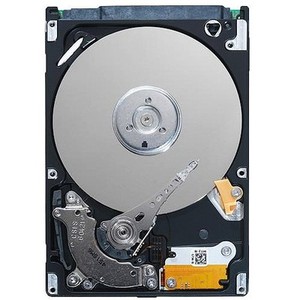

The refresh makes me wonder what Apple plans for its entry-level MacBook, which is making less and less sense within Apple’s lineup as the Airs become more competitive in speed and price. Backlit keyboards, present in the original Air but absent from the late 2010 refresh, also make a return, while screen resolution, port layout, battery life, and general construction remain largely the same as the previous model. The “high-end” version of each model gets a CPU speed bump option (a 1.8GHz i5, in both cases, for $150 in the 11" and $100 in the 13"), and the high-end 11" model has a 256GB SSD option for $300 (otherwise, SSD configurations are the same as the 2010 models - I would have liked to see the 64GB SSD phased out, but maybe next time around). The new models also get some spec bumps that make them more suited for use as primary machines: RAM is bumped to 4GB on all models except the low-end 11" (which is upgradeable to 4GB for $100). Especially in the 11” Air, however, keep in mind that a 1.4 or 1.6 GHz Core 2 Duo may have bottlenecked the GPU in some cases, so the increased CPU speed may actually result in better framerates for the new models. Without a model in-hand, I can’t give you any benchmarks, but expect the performance bump to be similar to the 13” MacBook Pro from earlier this year: CPU speed is going to get a much-needed and very noticeable bump, while graphics performance will remain just about the same as in the previous model. Thunderbolt has the potential to be more useful in the Air than in any of Apple’s other offerings – the Air’s size makes it difficult to upgrade, but a high-speed external port (with the ability to drive multiple daisy-chained displays) makes expandability less about the laptop’s ports (or relative lack thereof), assuming you can find and pay for Thunderbolt devices to suit your needs. Thunderbolt also comes along for the ride - for those of you just tuning in, Thunderbolt is an Intel-developed port that replaces the previous Mini DisplayPort while maintaining compatibility with previous-gen Mini DisplayPort dongles ( read more about ThunderBolt here).

Thunderbolt, 2x USB 2.0, SDHC slot, composite audio in/out jackĪs with the 13" MacBook Pro, the Air's Sandy Bridge bump jettisons the Core 2 Duo processors and the nVidia chipsets that have accompanied them since the unibody MacBooks were introduced in late 2008 (in fact, the only nVidia chips to be found in Apple's products at present are in the still-unrefreshed MacBook). Thunderbolt, 2x USB 2.0, composite audio in/out jack

Macbook pro 2011 hard drive capacity software#
It should also be noted that things seen as deficiencies in the original Air (like, say, the absence of wired Ethernet and an optical drive) are becoming less inconvenient as time goes on, since ubiquitous wi-fi and easy-to-download software are making these missing features less essential even in workaday Windows laptops.Īs usual, I'll give you the hard facts first, and get into details and analysis after: That refresh saw the Air line achieve the original model's potential in many ways, with a more affordable 11" model bringing it within reach to the common man and standard SSDs across the line removing the bottleneck of the first model's 1.8-inch 4200rpm mechanical hard drive. The next product in Apple's portfolio to get Sandy Bridged is the MacBook Air, which was last refreshed in October of 2010. Now that Lion is out ( you guessed it, we reviewed that too!), it’s time for the rest of the lineup to get with the times. 2011 has seen Intel's new Sandy Bridge processors and chipsets creeping slowly into every machine in Apple's lineup - we saw it in the MacBook Pros in February ( see our review) and more recently in the new iMacs ( we also reviewed those).


 0 kommentar(er)
0 kommentar(er)
